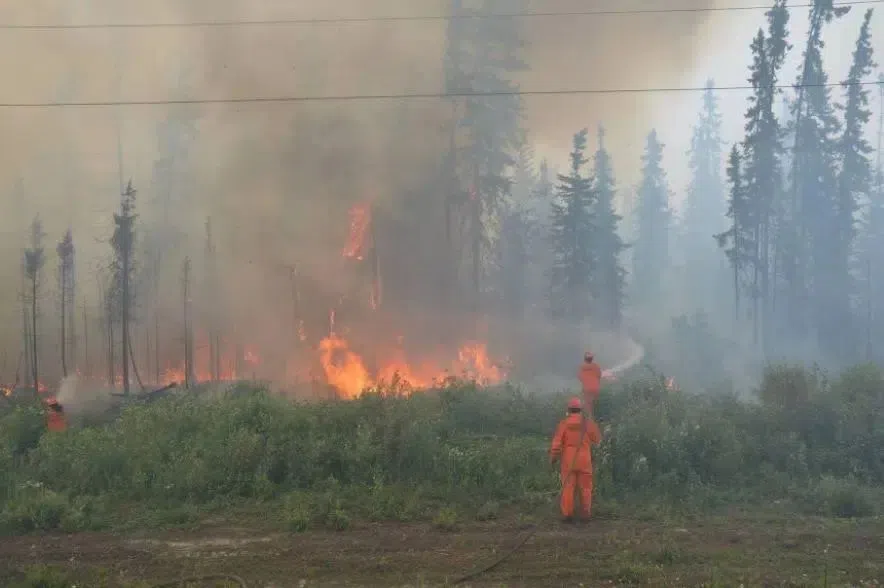After a record-setting wildfire season in 2023, the Saskatchewan Public Safety Agency (SPSA) gave an update on the upcoming season, saying it’s currently expected to be average or above average.
Starting off the update Monday, SPSA president Marlo Pritchard talked about much of the province getting below-average precipitation this winter.
“It is of no surprise that much of Saskatchewan received below-average precipitation this past winter, and at this time the province is anticipating areas of drought, lower water tables, and higher temperatures for 2024,” Pritchard said. “This means that there are several areas of the province that are at higher risk of grass fires this spring before green up.”
La Niña is also expected to play a factor this summer.
“Typically, la Niña tends to give cooler and wetter conditions, but that is not always the case,” Pritchard said.
Last year, 2,703 people needed to be moved out of their communities, but ultimately there was no damage to any homes or critical infrastructure.
The agency has started preparing earlier than normal this spring, bringing in ground and air crews two weeks early to start their training, meaning they’ll be ready to go earlier than normal.
Steve Roberts, the SPSA’s vice-president of operations, said the agency is bringing in the same number of firefighters – 220 of the Type 1 consisting of trained and experienced staff, and 410 of the Type 2 consisting of crews formed through agreements with First Nations and northern communities.
“We always have the capacity to bring on Type 3 firefighters in augmented roles. We did that in 2023 and that will continue to be our plan for 2024,” said Roberts.
Type 3 crews are emergency personnel hired on an as-needed basis.
Roberts couldn’t say exactly how many fires the SPSA is expecting for the summer, or how big the fires will be.
“It is drier than we have seen in a number of years — not the driest — but based on that, we currently cannot predict the number of fires or the size of those fires. It will 100 per cent be a combination of factors including weather, the number of fires, the size and location of those,” he said.
Roberts explained much of it will depend on the fires that happen in the spring, most of which are caused by humans.
“Our actual result on how much fire area burnt, and communities evacuated is 100 per cent reliant of people being careful with fire and not causing fires that should be avoided in early spring conditions until the lightning arrives,” said Roberts.
Pritchard said the SPSA is pushing out a campaign to bring people’s attention to the risk of fires and what people can do to prevent them.
The 2024-25 provincial budget provided the SPSA with a $5.5-million investment for four aircraft to help manage wildfires in the province, but the first of those aircraft isn’t to arrive until 2025.











